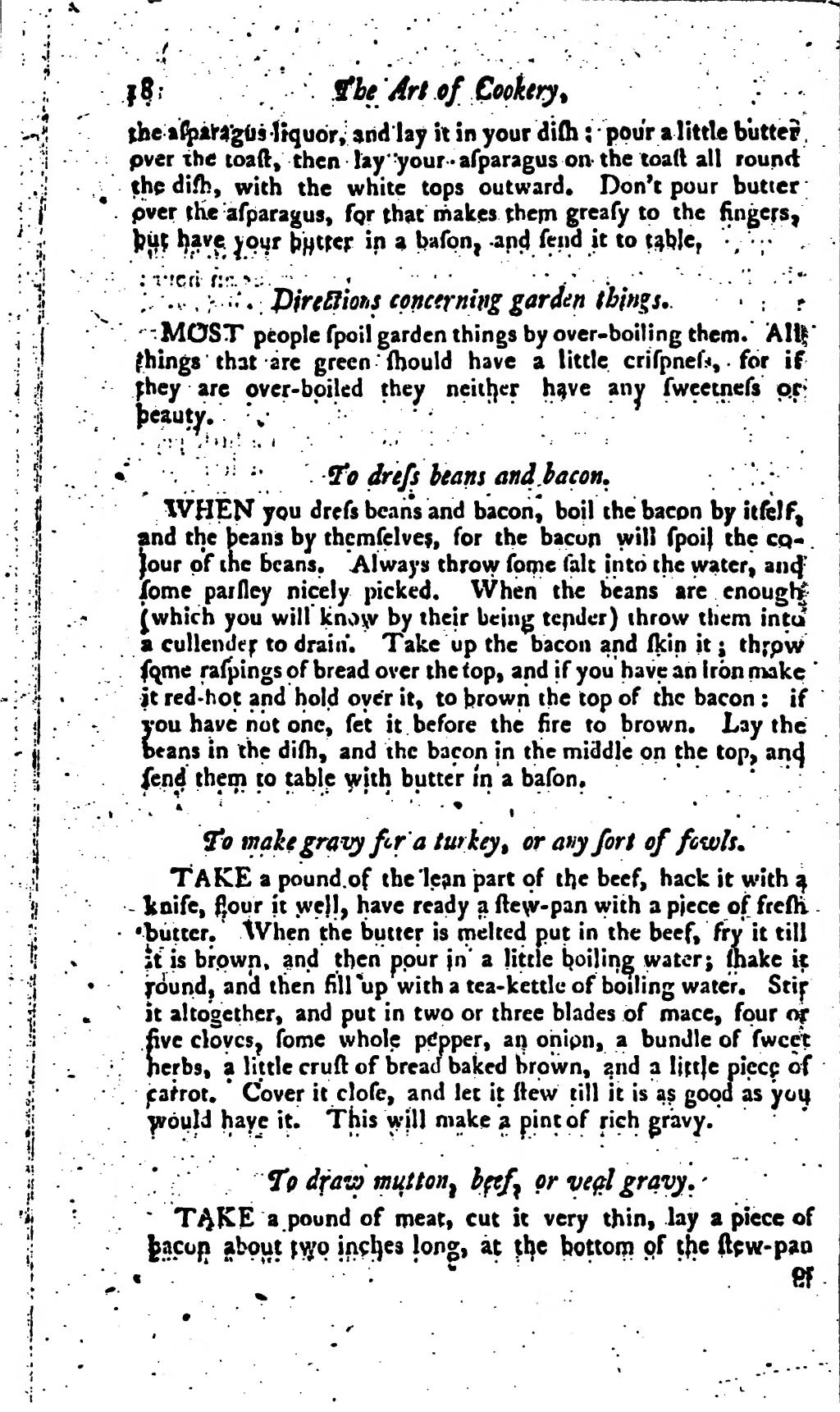the asparagus liquor, and lay it in your dish; pour a little butter over the toast, then lay your asparagus on the toast all round the dish, with the white tops outward. Don't pour butter over the asparagus, for that makes them greasy to the fingers, but have your butter in a bason, and send it to table.
Directions concerning garden things.
MOST people spoil garden things by over-boiling them. All things that are green should have a little crispness, for it they are over-boiled they neither have any sweetness or beauty.
To dress beans and bacon.
WHEN you dress beans and bacon, boil the bacon by itself, and the beans by themselves, for the bacon will spoil the coulour of the beans. Always throw some salt into the water, and some parsley nicely picked. When the beans are enough (which you will know by their being tender) throw them into a cullender to drain. Take up the bacon and skin it; throw some raspings of bread over the top, and if you have an iron make it red-hot and hold over it, to brown the top of the bacon: if you have not one, set it before the fire to brown. Lay the beans in the dish, and the bacon in the middle on the top, and send them to table with butter in a bason.
To make gravy for a turkey, or any sort of fowls.
TAKE a pound of the lean part of the beef, hack it with a knife, flour it well, have ready a stew-pan with a piece or fresh butter. When the butter is melted put in the beef, fry it till it is brown. and then pour in a little boiling water; shake it round, and then fill up with a tea-kettle of boiling water. Stir it together, and put in two or three blades of mace, four or five cloves, some whole pepper, an onion, a bundle of sweet herbs, a little crust of bread baked brown, a little pice of carrot. Cover it close, and let it stew till it is as good as you would have it. This will make a pint of rich gravy.
To draw mutton, beef, or veal gravy.
TAKE a pound of meat, cut it very thin, lay a piece of bacon about two inches long, at the bottom of the stew-pan
